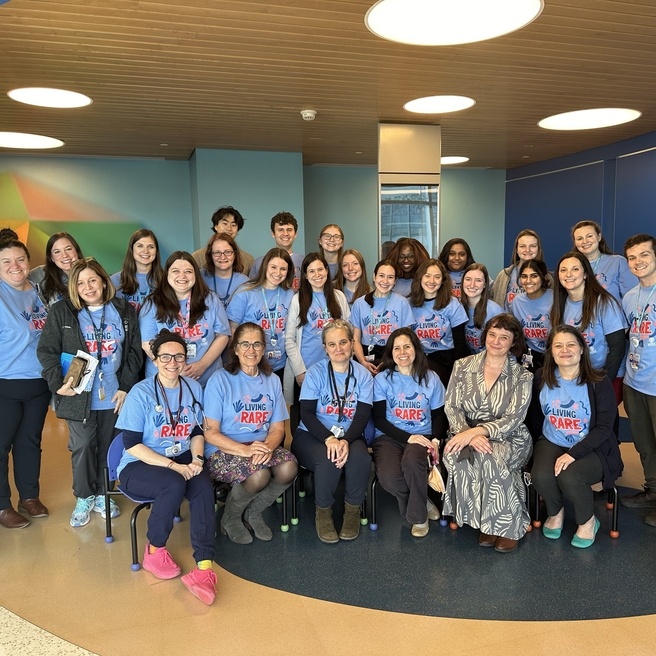What is Pelizaeus-Merzbacher disease?
Pelizaeus-Merzbacher disease (PMD) is a rare genetic disorder that affects the brain and spinal cord. It is a type of leukodystrophy, a group of conditions that affect the white matter of the brain. These conditions damage the myelin sheath — the protective coating around nerve cells in the brain and spinal cord. Myelin helps messages travel quickly between cells in the brain and body.
Causes of Pelizaeus-Merzbacher disease
People with PMD are born with a change in the PLP1 gene. This gene helps make myelin, the protective coating around nerves. In people with PMD, myelin doesn't form the way it should. Without healthy myelin, messages from the brain travel slowly or stop altogether, which leads to the symptoms of PMD.
Signs and symptoms of Pelizaeus-Merzbacher disease
There are different types of PMD, and each one can cause different signs and symptoms. Symptoms usually start in babies or young children and may include:
- Unusual eye movements
- Weak or stiff muscles
- Trouble breathing
- Trouble eating or swallowing
- Slow development or delays in reaching milestones
- Thinking or learning differences
Testing and diagnosis
In addition to looking at physical symptoms, diagnosing PMD involves several tests:
- A brain MRI (magnetic resonance imaging) can show patterns in brain tissue that are typical of PMD, as well as low levels of myelin.
- Genetic testing looks for changes in the gene linked to PMD. This test is done from a blood or saliva sample or a cheek swab. The results, along with other tests, can lead to a diagnosis of PMD.
Treatment of Pelizaeus-Merzbacher disease
There is currently no cure for PMD, but there are treatments to help manage symptoms and keep children comfortable. Each child’s treatment is unique depending on their symptoms.
Some children with PMD need help breathing. Others may need feeding therapy or special diets. Seizures can often be controlled with medication.
Children with PMD should also be monitored for:
- Feeding, growth and weight changes
- Bone issues, such as scoliosis, dislocated joints and low bone density, which are linked to motor issues in PMD
If any of these conditions are found, pediatric subspecialists can help treat them. Many children with PMD also benefit from physical, occupational and speech therapy to combat challenges caused by the disease.
Clinical trials may also be an option. Your doctor can help you learn more about these studies. You can also find a list of ongoing studies at www.clinicaltrials.gov.
Follow-up
Children with PMD need regular monitoring by neurologists, as well as ongoing therapy and coordinated care by other medical subspecialists as needed. At Children’s Hospital of Philadelphia (CHOP), families have access to advanced, multidisciplinary care, delivered by clinicians with deep expertise in leukodystrophies, all within a compassionate, family-centered environment.
Long-term outlook for children with Pelizaeus-Merzbacher disease
PMD is a progressive, life-limiting disease, with symptoms that worsen over time. However, there are treatments that can improve a child’s quality of life. CHOP is one of the premiere institutions for leukodystrophy care and a designated Center of Excellence. Our ongoing research efforts aim to enhance outcomes for children with PMD and offer families hope for the future of leukodystrophy care.
Resources to help
Leukodystrophy Center Resources
We have created resources to help you find answers to your questions and feel confident with the care you are providing your child.
Reviewed on 07/25/2025
